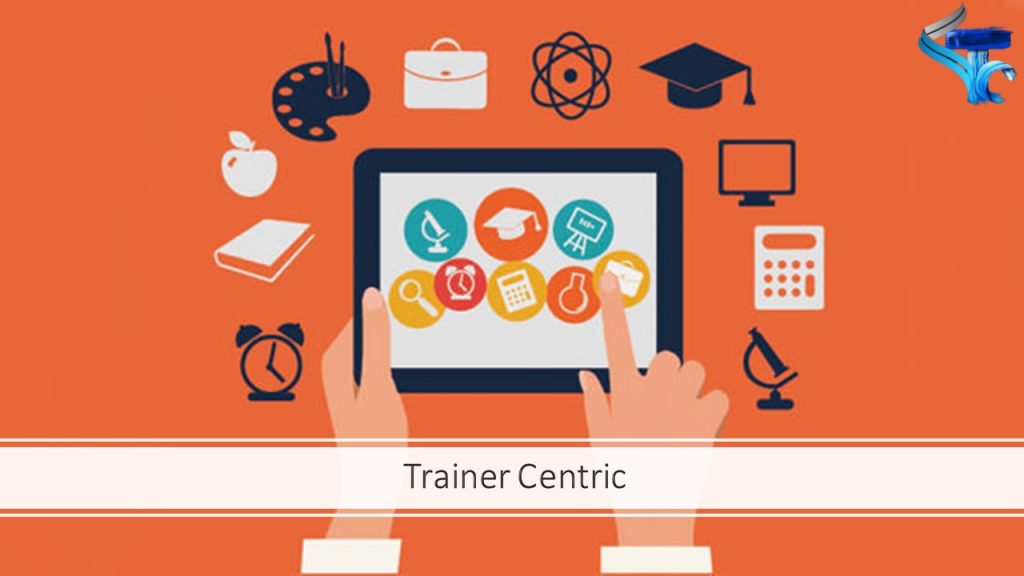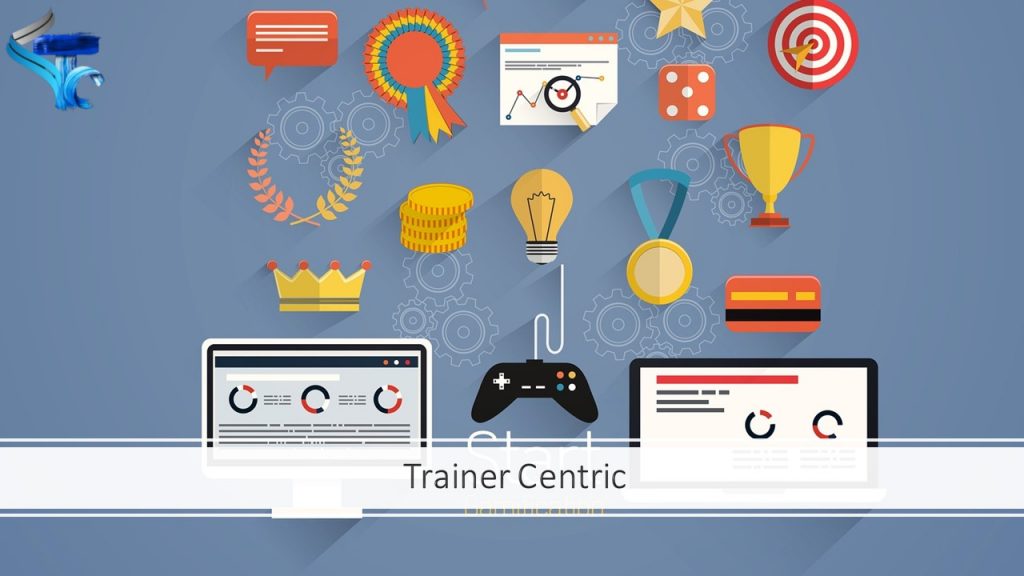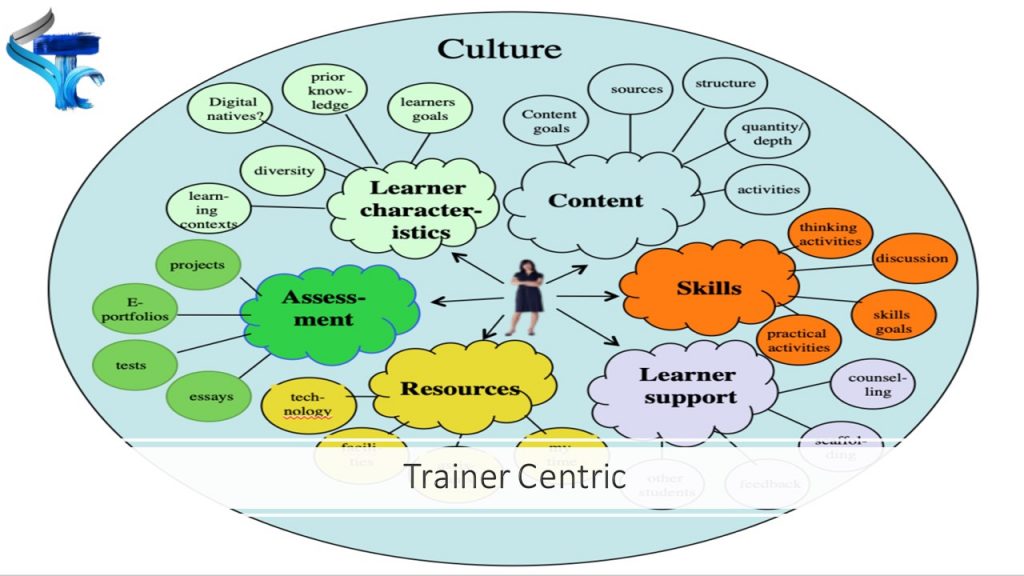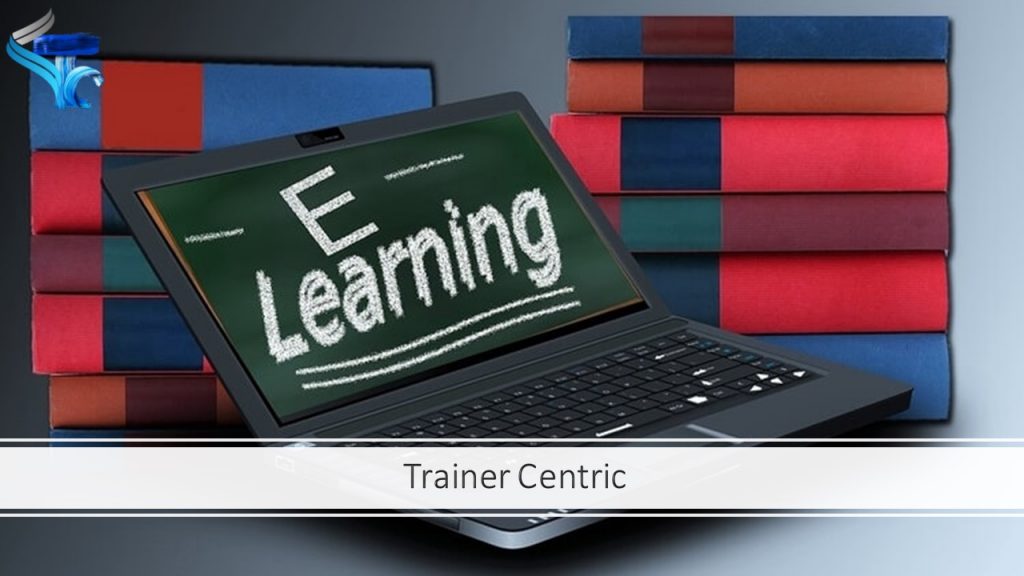In the dynamic landscape of corporate training, embracing effective online learning methodologies is pivotal. This comprehensive guide is tailored for corporate trainers, providing actionable Tips for Effective Online Learning to enhance professional development within the digital realm.
Table of Contents
Tip 1 of 10 Tips for Effective Online Learning: Embracing Interactive Learning Platforms

In the ever-evolving landscape of employee training, the shift towards online platforms is undeniable. The significance of Embracing Interactive Learning Platforms, shedding light on how these dynamic tools revolutionize employee training, fostering a more engaged and skillful workforce is just amazing.
Understanding the Power of Interactivity
The cornerstone of effective online training lies in interactivity. Grasp the power of interactive learning as a means to actively engage employees. Features like quizzes, simulations, and virtual scenarios captivate attention, making learning a dynamic and participatory experience.
Choosing the Right Interactive Learning Too
The market boasts a plethora of interactive learning tools, each with unique features. Carefully select tools that align with training goals. Whether it’s gamified modules, virtual labs, or collaborative platforms, the right tools enhance the overall learning journey. Here is the trainercentric’s list of most popular and free interactive tools that can enhance your online learning experience to 10 times more fun and engaged. Tips for Effective Online Learning.
Tip 2 of 10 Tips for Effective Online Learning: Customizing Content for Relevance
In the realm of online training, a one-size-fits-all approach is no longer sufficient. Customizing content for relevance is the key to unlocking the full potential of training programs.
Understanding the Diverse Audience
Before embarking on the customization journey, it’s crucial to comprehend the diversity within the audience. Participants in online training programs come from various backgrounds, roles, and levels of expertise. Conduct audience analysis to identify the unique characteristics and learning preferences of the participants.
Aligning with Organizational Goals
Customization should not only meet individual needs but also align with overarching organizational goals. Collaborate with stakeholders to gain insights into the strategic objectives of the organization. Tailor training content to support these goals, ensuring a direct impact on organizational success.
Addressing Industry-Specific Challenges
Different industries face distinct challenges. Customizing content to address industry-specific issues enhances the relevance of the training. Incorporate real-world examples and case studies from the relevant industry, providing participants with practical insights and solutions.
Personalizing Learning Paths
Recognize that learners have varied learning styles and preferences. Offer personalized learning paths that allow participants to choose modules based on their roles, skill levels, or areas of interest. This flexibility empowers learners, increasing their engagement and motivation. This is one of the amazing tips for Effective Online Learning.
Incorporating Real-World Scenarios
Theoretical knowledge becomes more impactful when it’s grounded in real-world scenarios. Integrate relevant case studies and practical examples that participants can relate to. This connection between theory and practice enhances understanding and application.
Utilizing Multimodal Content
People absorb information differently. Some are visual learners, while others prefer auditory or kinesthetic approaches. Utilize multimodal content by incorporating videos, infographics, podcasts, and interactive elements. This caters to diverse learning styles, making the training more inclusive.
Regularly Updating Content
Industries evolve, and so should training materials. Establish a regular content review and update schedule to ensure that the information remains current and relevant. This proactive approach reflects a commitment to providing the latest insights to participants. This is one of the amazing tips for Effective Online Learning.
Gathering Participant Feedback
Engage participants in the customization process by soliciting feedback. Regularly conduct surveys or feedback sessions to understand what works and what needs improvement. This collaborative approach creates a sense of ownership and enhances the overall training experience.
Tailoring Assessments to Roles
Assessments are integral to gauging participant understanding. Customize assessments to align with specific roles within the organization. This ensures that participants are evaluated on skills and knowledge directly applicable to their responsibilities. This is one of the amazing tips for Effective Online Learning.
Emphasizing Practical Application
The ultimate goal of training is to enable participants to apply what they’ve learned in their roles. Design training activities that simulate real-world scenarios, allowing participants to practice and reinforce their newly acquired skills.
Tip 3 of 10 Tips for Effective Online Learning: Incorporating Real-World Case Studies
The effectiveness of online training lies in its ability to bridge the gap between theory and practice. Incorporating real-world case studies is a powerful strategy to achieve this, providing participants with practical insights and fostering a deeper understanding of the subject matter.
Understanding the Pedagogical Value
Real-world case studies bring a tangible dimension to online training. They present participants with actual scenarios, challenges, and solutions encountered in the professional realm. Acknowledge the pedagogical value of case studies in enabling participants to apply theoretical concepts to practical situations. This is one of the amazing tips for Effective Online Learning.
Aligning Case Studies with Learning Objectives
To maximize the impact of case studies, align them with the learning objectives of the training program. Clearly define the skills and knowledge participants should gain from the case study, ensuring a direct connection between the scenario presented and the desired learning outcomes.

Diverse Case Studies for Varied Perspectives
Embrace diversity in case studies to cater to participants from different backgrounds and industries. Incorporate case studies from various sectors to provide a well-rounded perspective. This diversity enhances the adaptability of participants, preparing them for a range of real-world scenarios.
Creating Interactive Scenarios
Transform case studies into interactive scenarios by integrating decision-making elements. Allow participants to make choices, solve problems, and witness the consequences of their decisions. This interactive approach enhances engagement and immerses participants in the learning experience.
Showcasing Success Stories
While case studies often highlight challenges, it’s equally important to showcase success stories. Illustrate how organizations overcame obstacles and achieved positive outcomes. Success stories inspire participants and demonstrate the practical application of effective strategies. This is one of the amazing tips for Effective Online Learning.
Facilitating Group Discussions
Encourage collaborative learning by facilitating group discussions around case studies. Virtual forums, discussion boards, or live sessions provide platforms for participants to share insights, perspectives, and potential solutions. This collaborative approach enriches the learning experience.
Addressing Ethical Dilemmas
Real-world scenarios often involve ethical considerations. Incorporate case studies that present ethical dilemmas, prompting participants to analyze situations from an ethical standpoint. This fosters critical thinking and ethical decision-making skills.
Updating Case Studies for Relevance
Industries evolve, and so should case studies. Regularly update case studies to reflect current trends and challenges. This ensures that participants are exposed to relevant and timely examples, enhancing the applicability of the training content. This is one of the amazing tips for Effective Online Learning.
Providing Accessible Resources
Ensure that participants have access to supplementary resources related to the case studies. Provide relevant articles, reports, or interviews that offer additional insights. Accessible resources empower participants to delve deeper into the subject matter. This is one of the amazing tips for Effective Online Learning.
Encouraging Reflection and Application
Capitalize on case studies to encourage reflection and application. Prompt participants to reflect on their own experiences in light of the case study and consider how they can apply the lessons learned in their professional roles. This is one of the amazing tips for Effective Online Learning.
Tip 4 of 10 Tips for Effective Online Learning: Fostering Virtual Collaboration
As the landscape of education evolves, fostering virtual collaboration becomes paramount for the success of online training programs. Building a connected learning community through virtual collaboration tools not only enhances participant engagement but also creates an environment conducive to shared learning experiences. This is one of the amazing tips for Effective Online Learning.
Choosing Appropriate Collaboration Tools
The foundation of virtual collaboration lies in selecting the right tools. Choose collaboration platforms that align with the goals of your training program. Video conferencing tools, project management platforms, and collaborative document editors are essential for creating a dynamic virtual learning environment. This is one of the amazing tips for Effective Online Learning.
Establishing Clear Communication Channels
Clear communication is fundamental to virtual collaboration. Establish dedicated communication channels for different purposes, such as general announcements, group discussions, and one-on-one interactions. This clarity ensures that participants can easily access and contribute to relevant discussions. This is one of the amazing tips for Effective Online Learning.
Implementing Virtual Team Projects
Promote collaboration by implementing virtual team projects. Assign participants to small groups, each responsible for a specific project or task. This approach not only enhances teamwork but also allows participants to apply their learning in real-world scenarios. This is one of the amazing tips for Effective Online Learning.

Hosting Virtual Workshops and Webinars
Create opportunities for interactive learning through virtual workshops and webinars. Invite industry experts or internal thought leaders to lead sessions. These events not only provide valuable insights but also foster a sense of community and shared learning among participants. This is one of the amazing tips for Effective Online Learning.
Encouraging Peer-to-Peer Learning
Facilitate peer-to-peer learning by encouraging participants to share their expertise. Create forums or discussion boards where participants can post insights, articles, or success stories related to the training content. This collaborative exchange enriches the learning experience. This is one of the amazing tips for Effective Online Learning.
Leveraging Gamification for Collaboration
Integrate gamification elements to incentivize collaboration. Implement leaderboards, badges, or points for active participation and contribution. Gamification not only makes collaboration enjoyable but also motivates participants to actively engage with the training content. This is one of the amazing tips for Effective Online Learning.
Providing Collaborative Learning Resources
Supply participants with collaborative learning resources, such as shared documents, wikis, or knowledge bases. These resources serve as a centralized hub for information, allowing participants to collaborate on content creation and knowledge sharing.
Scheduling Virtual Networking Events
Nurture a sense of community by scheduling virtual networking events. Whether it’s a casual chat, a virtual coffee hour, or a networking session, these events provide participants with opportunities to connect, share experiences, and build relationships beyond the confines of formal training sessions.
Offering Virtual Mentoring Programs
Establish virtual mentoring programs to facilitate one-on-one connections between experienced professionals and learners. Mentoring programs foster a supportive learning environment and provide participants with personalized guidance and insights.
Creating Collaborative Assessment Activities
Design collaborative assessment activities that require participants to work together on solving problems or completing tasks. This approach not only assesses their understanding of the material but also reinforces the importance of collaboration in the learning process. This is one of the amazing tips for Effective Online Learning.
Tip 5 of 10 Tips for Effective Online Learning: Assessing Progress Through Analytics
While the flexibility of online learning is a boon, assessing progress can be challenging. Analytics provides a data-driven approach to understanding how students engage with course materials, perform in assessments, and persist through challenges.

Types of Analytics
Learning analytics involves the measurement, collection, analysis, and reporting of data about learners and their contexts for optimizing the learning environment. Descriptive analytics help in understanding what has happened, diagnostic analytics uncover why it happened, predictive analytics forecast what might happen, and prescriptive analytics suggest actions to influence outcomes.
Engagement Metrics : Tracking student engagement is vital for assessing progress. Metrics such as time spent on a platform, frequency of logins, and participation in discussions provide insights into the level of student involvement.
Performance Metrics: Assessing academic performance through analytics involves analyzing grades, completion rates, and assessment scores. This data helps educators identify areas where students excel and where they may need additional support. This is one of the amazing tips for Effective Online Learning.
Retention Metrics: Understanding student retention is crucial in online learning. Analytics can identify patterns leading to dropout, enabling timely interventions to support struggling learners and improve overall retention rates.
Popular Tools in Online Learning
A plethora of analytics tools are available for educators. From Learning Management Systems (LMS) with built-in analytics to specialized data visualization tools, choosing the right tool depends on the specific needs and goals of the educational institution.
Monitoring and Adjusting Strategies
Learning analytics is not a one-time assessment but an ongoing process. Regularly monitoring data allows educators to identify trends, assess the effectiveness of teaching strategies, and make adjustments in real-time.
Feedback Loops in Online Education
Creating feedback loops, where insights from analytics inform instructional decisions, ensures continuous improvement. Educators can learn from data and adapt their approaches to better meet the needs of their students. This is one of the amazing tips for Effective Online Learning.
Best Practices for Utilizing Analytics
- Regular Data Reviews: Frequent reviews of analytics data allow educators to stay informed and make timely adjustments. Regular data reviews also facilitate collaboration among teachers, enabling the sharing of insights and best practices.
- Collaborative Approach in Decision-Making: Incorporating a collaborative approach to decision-making involving teachers, administrators, and IT professionals ensures that diverse perspectives are considered when implementing and optimizing analytics tools.
- Communicating Results to Students: Transparency is crucial when communicating analytics results to students. Educators should provide clear explanations of the data, how it is used, and the benefits it brings to the learning experience.
- Gaining Support from Administrators: Educators must communicate the value of learning analytics to administrators. Demonstrating how analytics positively impacts student outcomes and contributes to institutional goals can garner support for continued implementation. This is one of the amazing tips for Effective Online Learning.
Assessing progress through analytics in online learning is a multifaceted process that requires a thoughtful approach. By understanding the role of analytics, embracing key metrics, implementing effective tools, and considering the human element, educators can unlock the full potential of online education.
Tip 6 of 10 Tips for Effective Online Learning: Providing Flexibility in Learning Paths
In the ever-evolving landscape of education, providing flexibility in learning paths has become a cornerstone in catering to the diverse needs and preferences of students. This article explores the definition of flexible learning paths, the benefits they offer, strategies for implementation, and the role of technology in fostering adaptability in education.

Importance of Flexibility in Education
The traditional one-size-fits-all model of education often falls short in meeting the needs of diverse learners. Flexibility in learning paths empowers students to take control of their education, fostering a more personalized and engaging learning experience.
Personalized Learning Experiences: The ability to tailor learning paths allows educators to address individual strengths and weaknesses, providing a more personalized and effective learning journey for each student. This is one of the amazing tips for Effective Online Learning.
Increased Student Engagement: Flexibility captures and sustains student interest by allowing them to explore topics in ways that resonate with their interests, making the learning experience more enjoyable and engaging.
Improved Learning Outcomes: Customizing learning paths aligns with the diverse needs of students, leading to improved learning outcomes as they can progress at their own pace and in ways that suit their learning styles. This is one of the amazing tips for Effective Online Learning.
Strategies for Designing Flexible Learning Paths
- Modular Course Structures: Breaking down courses into modular components enables students to focus on specific topics of interest, promoting a more targeted and efficient learning experience.
- Choice-Based Assignments: Introducing choice in assignments allows students to select tasks aligned with their interests and strengths, fostering a sense of ownership and motivation in their learning journey.
- Self-Paced Learning Modules: Enabling self-paced learning allows students to progress through materials at their own speed, accommodating different learning paces and ensuring a deeper understanding of concepts.
Overcoming Challenges in Flexible Learning
- Ensuring Consistent Quality: Maintaining quality in flexible learning paths requires careful planning and standardization of content. Educators must ensure that all paths provide a consistent level of educational value.
- Addressing Technological Barriers: To ensure inclusivity, educators must address potential technological barriers that students may face. Providing support and alternatives for those with limited access to technology is essential.
- Gathering Feedback on Learning Paths: Collecting feedback from students about their experiences with flexible learning paths is crucial. This input helps educators make informed adjustments and improvements. This is one of the amazing tips for Effective Online Learning.
Providing flexibility in learning paths is essential for meeting the diverse needs of students in today’s educational landscape. By understanding the benefits, leveraging technology, implementing effective strategies, and considering future trends, educators can create dynamic and inclusive learning experiences that empower students for success.
Tip 7 of 10 Tips for Effective Online Learning: Incorporating Continuous Feedback Mechanisms
In the dynamic landscape of online learning, the incorporation of continuous feedback mechanisms plays a pivotal role in enhancing the learning experience. This article explores the definition of continuous feedback, its significance in student success, various feedback mechanisms, tools for implementation, effective feedback practices, challenges, case studies, and the future trends shaping the landscape of continuous feedback in online education.

Importance of Feedback Mechanisms
Feedback mechanisms are crucial for student development and success in online learning. They offer insights into progress, motivate learners, and allow for real-time adjustments to teaching strategies, ultimately contributing to a more effective and engaging educational experience.
The Role of Continuous Feedback in Student Success
Real-time Adjustments: Continuous feedback enables educators to make real-time adjustments to their teaching methods based on student performance and engagement, ensuring that the learning experience remains relevant and effective.
Motivation and Engagement: Regular feedback motivates students by recognizing their achievements and guiding them on areas for improvement. This positive reinforcement enhances engagement and encourages a proactive approach to learning. This is one of the amazing tips for Effective Online Learning.
Types of Continuous Feedback Mechanisms
- Formative Assessments: formative assessments, conducted throughout a course, provide ongoing insights into student understanding. They allow for adjustments to teaching strategies and help identify areas where additional support may be needed.
- Peer Feedback: Peer feedback fosters collaboration and a sense of community among learners. It provides diverse perspectives and encourages students to reflect on their work from different angles.
- Automated Feedback Systems: Utilizing automated systems for feedback streamlines the process, offering timely insights on assignments and assessments. These systems can handle large class sizes efficiently while providing instant feedback to students. This is one of the amazing tips for Effective Online Learning.
Designing Effective Feedback Practices
Timeliness and Consistency: Timely feedback is essential for its effectiveness. Consistency in providing feedback establishes expectations and helps students develop a rhythm of reflection and improvement.
Constructive Feedback: Constructive feedback focuses on specific strengths and areas for improvement. It provides actionable insights that guide students toward enhanced understanding and mastery of the subject matter.
Goal-Oriented Feedback: Aligning feedback with learning objectives helps students understand how their efforts contribute to broader educational goals. Goal-oriented feedback provides a sense of purpose and direction.
The incorporation of continuous feedback mechanisms in online learning is integral to fostering a supportive and effective educational environment. By understanding the types of feedback, implementing tools, designing effective practices, overcoming challenges, and embracing future trends, educators can create a feedback-rich landscape that enhances student success and engagement.
Tip 8 of 10 Tips for Effective Online Learning: Leveraging Gamification for Engagement
Leveraging gamification has emerged as a powerful strategy to enhance student engagement. This article delves into the definition of gamification, explores its psychological aspects, highlights the benefits, discusses key gamification elements, explores implementation tools, and offers insights into designing effective gamified activities.

Significance of Gamification for Engagement
Engagement is a critical factor in online learning success. Gamification leverages the inherent appeal of games to captivate students, making learning enjoyable and fostering a sense of accomplishment.
The Psychology of Gamification
Intrinsic Motivation: Gamification taps into intrinsic motivation, where students find joy and satisfaction in the learning process itself. This internal drive enhances sustained interest and participation.
Elements of Game Design: Understanding elements like challenges, rewards, and storytelling from game design helps educators create immersive and compelling gamified experiences in the online classroom.
Benefits of Gamification in Online Learning
Increased Motivation: Gamification ignites motivation by introducing elements of competition and achievement, encouraging students to actively participate and strive for success.
Enhanced Learning Experience: The interactive and dynamic nature of gamified activities provides a unique learning experience, catering to various learning styles and keeping students invested in the content.
Fostering a Sense of Achievement: By incorporating rewards and recognition, gamification instills a sense of achievement, boosting students’ confidence and reinforcing positive learning behaviors.
Gamification Elements for Engagement
- Points and Rewards: Assigning points for completing tasks and offering rewards creates a sense of accomplishment and motivates students to actively participate in the learning process.
- Badges and Certificates: Recognizing achievements with badges and certificates serves as a tangible representation of progress, fostering a sense of pride and accomplishment.
- Leaderboards and Competition: Introducing leaderboards and healthy competition among students adds an element of challenge, encouraging friendly rivalry and pushing students to excel.
How to Design Effective Gamified Activities
Aligning with Learning Objectives: Gamified activities should align with educational goals, ensuring that the elements incorporated enhance, rather than distract from, the learning objectives.
Balancing Challenge and Skill: Effective gamification finds the right balance between challenge and skill, keeping activities engaging without becoming overwhelming or too easy.
Incorporating Storytelling Elements: Integrating storytelling elements into gamified activities adds a narrative dimension, making the learning experience more immersive and memorable.
Leveraging gamification in the online classroom offers a dynamic approach to enhance student engagement and motivation. By understanding its psychological aspects, incorporating key elements, overcoming challenges, and adapting to future trends, educators can create gamified experiences that transform online learning into an exciting and effective educational journey.
Tip 9 of 10 Tips for Effective Online Learning: Cultivating a Supportive Learning Community
The creation of a supportive learning community is vital for student success and engagement. This article explores effective strategies and tips for building and nurturing a strong sense of community in the online learning environment.

Importance of Community in Online Learning
Building a sense of community in the virtual space is essential for fostering positive learning experiences. A supportive learning community enhances motivation, collaboration, and overall student well-being.
Building Connections in the Virtual Space
Icebreakers and Introductions: Initiating online courses with icebreakers and introductions creates a friendly atmosphere, allowing students to get to know each other and fostering a sense of belonging.
Discussion Forums and Group Activities : Utilizing discussion forums and group activities encourages interaction and collaboration, providing opportunities for students to share insights, discuss topics, and collaborate on assignments.
Fostering Communication and Collaboration
Utilizing Virtual Communication Tools: Leveraging virtual communication tools, such as video conferencing and messaging platforms, facilitates real-time interaction, enabling students to communicate effectively and build connections.
Group Projects and Collaborative Assignments: Incorporating group projects and collaborative assignments encourages teamwork, enhancing communication skills, and fostering a collaborative spirit within the learning community.
Virtual Office Hours: Offering virtual office hours provides students with dedicated times to seek clarification, ask questions, and receive personalized support, creating a virtual space for one-on-one interactions.
Peer Mentoring Programs: Establishing peer mentoring programs connects experienced students with newcomers, fostering a supportive mentorship dynamic that enhances the overall learning experience.
Cultivating a supportive learning community in online education requires a thoughtful combination of strategies. By building connections, fostering communication, celebrating achievements, and addressing challenges, educators can create an inclusive and engaging online learning environment. The ongoing evolution of community-building strategies, embracing future trends, and considering cultural nuances contribute to the lasting impact of supportive learning communities.
Tip 10 of 10 Tips for Effective Online Learning: Staying Abreast of Technological Advancements
Staying updated on technological advancements is crucial for providing effective and engaging learning experiences. This article explores key tips and strategies for educators and training professionals to stay abreast of the latest technologies shaping the landscape of online training.

Impact of Technology on Online Training
Technology plays a transformative role in online training, influencing the way content is delivered, accessed, and interacted with. Understanding and embracing these technological changes is vital for creating modern and impactful training programs.
Continuous Learning for Educators
Professional Development Opportunities: Engaging in continuous professional development opportunities, such as workshops, courses, and certifications, enables educators to acquire new skills and stay informed about emerging trends in online training technology.
Webinars and Conferences: Participating in webinars and conferences dedicated to educational technology provides valuable insights into the latest tools and methodologies, fostering a culture of continuous learning among educators.
Features and Updates in LMS: Regularly exploring and utilizing the features and updates in Learning Management Systems ensures educators can take full advantage of the functionalities that enhance the online training experience.
Customization for Effective Training: Customizing LMS platforms to align with specific training objectives allows for a tailored learning environment, catering to the unique needs and preferences of learners.
Embracing Mobile Learning
Responsive Design for Various Devices: Implementing responsive design in training materials ensures accessibility across various devices, accommodating the increasing trend of mobile learning.
Mobile Apps for Flexible Training: Leveraging mobile apps provides learners with flexibility, allowing them to access training materials on-the-go and promoting a seamless learning experience.
The emergence of EdTech startups introduces innovative solutions and technologies, contributing to the continuous evolution of the online training landscape. Staying abreast of technological advancements in online training is a continuous journey that involves a commitment to learning, adaptability, and a tech-savvy approach. By embracing the latest technologies, educators and training professionals can create impactful and engaging online training experiences that meet the evolving needs of learners.

![The Power of Storytelling in Corporate Training: Igniting Success and Inspiring Growth [2023]](https://trainercentric.com/wp-content/uploads/2023/06/storytelling-1024x576.jpg)

